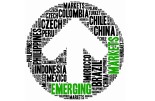Capital Group: Emerging market debt - four months into the crisis
Capital Group: Emerging market debt - four months into the crisis

By Kirstie Spence, Portfolio Manager, Capital Group
We still believe that there is good value across a range of emerging market (EM) debt assets – in absolute terms and relative to other fixed income asset classes. Emerging market debt is unlikely to face a broad EM debt crisis, at least in the next couple of years. It should benefit from the massive liquidity spill-over as lower risk assets become more fully valued.
How has COVID-19 impacted emerging markets?
The virus has spread rapidly through most countries in the world, including emerging markets (EM). The actual number of cases is likely to remain unknown as testing is harder to deploy in EMs than in developed markets (DM), but what we do know now is that the appetite in EM for total lockdown and the ability to implement and monitor it, is also low. EM governments face a trade-off around the social and economic costs of trying to control the virus, versus the impact on the population’s health from the virus.
This is likely to have two main effects. Firstly, virus-induced recessions will probably be shallower in EMs than DMs. The steepest recessions we are seeing are in the countries with the most stringent, longest and belated lockdowns. The second outcome, which is more speculative, is that EM countries may learn to live with the virus more effectively, but they are unlikely to bring it ‘under control’. If herd immunity is the answer, and if actual death rates from the virus in the vast majority of EMs are lower, living with it until there is a vaccine will be accepted. This has been a common path with other communicable diseases many of these countries face all the time. Accepting this also lessens the depth of the recession.
Does this mean that EM countries avoid such severe recessions?
Not necessarily. The cost of attempted lockdowns, the shutdown of global trade and the lack of investment are all very costly and directly impact EM countries. The countries that should be more resilient are those that are more closed and less exposed to the global trends. Ironically, many of these are the poorer/more frontier-type economies.
The question then becomes the economic recovery. The bear case scenario is that recessions in EM countries end up being deeper and longer than we expect, which could cause a decline in potential growth. This can happen when private investment is cut, human capital gets eroded (as unemployment rises) and international trade falls, all of which would affect productivity negatively. The retreat from globalisation that was already happening before the virus could also be accelerated.
Most EM countries have announced monetary and fiscal stimulus programmes, which makes sense from a growth perspective, even if there are concerns about the implications for debt for some countries. A bull case scenario would be if EM countries were to focus fiscal stimulus on infrastructure and long-term projects, which would actually turn out to be the growth boost that many EM countries need. In more ‘normal’ circumstances, there is a great deal of caution around debt and borrowing, as well as prescriptive International Monetary Fund (IMF) style fiscal prudence that the markets focus heavily on; but for now, many EM countries are facing a window of opportunity to carry out some long overdue, large-scale infrastructure projects.
While frontier markets have seen significant growth over the past decade, the rest of emerging markets do not seem to have enjoyed the same growth rates. Why do you think that is and what impact will the current situation have on EM growth prospects?
I believe there are two main reasons for this. Firstly, the transition from low to middle income status is generally easier than the transition from middle to higher income country status. The rewards that come from low to middle income generally follow quite soon after a few straightforward principles are adopted (e.g. raising fiscal revenues, focusing on price stability, attracting foreign direct investment by delivering on macroeconomic stability, etc).
The transition from middle income to higher income though is much more challenging. It requires deep structural reforms, which takes years to implement and even longer to see the benefits. These reforms are focused around education, labour market productivity, infrastructure investment – all of which require time horizons and visions that are a lot longer than the short political terms that the vast majority of emerging democracies allow. Autocratic political frameworks have more time, but political stability can be a problem. This is where many of the core EM countries – Mexico, Brazil, South Africa, Russia, Turkey – have been for the past decade and why so little growth has been seen; in fact, many of them seem to be going backwards.
The second issue has been the growth in developed markets (DM). Almost by definition, once a country achieves a more middle-income status, that country becomes more integrated into the global economy. The result is that these countries are beholden to the fortunes of the global economy and for the past decade, most of the developed world has been stuck in a debt-riddled, austerity-driven, economic rut. Meanwhile, many frontier countries have benefitted from Chinese growth.
This is where I see the light at the end of the tunnel: I do not think the DMs will rush to austerity this time to reduce the new large debt burdens. There is simply no political appetite for this. Initially at least, DM countries are likely to follow the ‘spend our way out of it’ approach. Both the US Federal Reserve (the Fed) and the European Central Bank (ECB) have shown that they will do whatever is needed to provide the liquidity and easy monetary conditions, while the size of most DM fiscal programmes is huge and universal. I think that it will feel meaningfully different to post-global financial crisis (GFC) times in terms of response, and I think, will be more important for the EM growth outlook than what EM governments can do domestically. The question mark so far is China – I am quite sure it will join in the growth stimulus as other markets do.
Overall, I think there will be a growth stimulus for EMs on quite a large scale that is both domestically and externally driven. This is important. Without growth the debt build-up is unsustainable over a five-year plus time frame – either way, the next couple of years are not the issue. For EM countries, growth is the lifeline and the only path out of another lost decade. This crisis might, ironically, give EM countries a chance at achieving growth.
Many EM countries seem to have followed the DMs with liquidity provision, lower interest rates and even quantitative easing. How will this all impact debt sustainability in EMs? Are we likely to see an EM debt crisis?
As many EM countries have been following in the monetary easing footsteps of DM countries, there is a very real risk of an escalating and then unsustainable debt burden. There is no question there will be some countries for whom this tips them into a debt crisis. We currently have five EM countries in default, in the midst of restructuring programmes or likely to head into one, which is unusually high. Interestingly though, four of them were already heading into a restructuring before the crisis – Lebanon, Argentina, Zambia and Venezuela. The only restructuring triggered by the current crisis was in Ecuador.
There are a few countries now that have a combination of a high debt burden to start with and are directly impacted by the repercussions of the crisis, including countries that are well integrated into global trade or rely on tourism or commodities. An example is Sri Lanka, which relies on tourism. And there are those, like Brazil, whose external debt burden is just about manageable, but the domestic debt burden is high and about to become much larger due to the crisis response policies.
What is not the case, however, is that all EMs are about to tip over the edge, or that due to the debt issuance over the past few years, the whole asset class is about to implode.
Why do you believe that most EM countries will be able to withstand a rise in debt levels?
I think there are three main reasons for this. Firstly, while aggregate debt issuance has increased significantly across the board over the past decade, it has mostly reflected an increase in the number of countries and companies issuing debt, rather than one or two countries increasing their own debt burden meaningfully (China is an exception here). This has been facilitated by quantitative easing (QE) in the developed world and the demand for yield. Many new entrants to the bond markets have debt levels that are reasonably low in debt stock terms (at or below 50% of GDP), while some have debt interest ratios that are unsustainably high. In those cases, however, most of their debt has been issued in their domestic currency, and so that debt can be printed, inflated away or rolled over. Unsustainable domestic debt levels manifest in higher interest costs, yield curve shifts, currency devaluations and shorter-term debt. These are all incredibly costly economically, but different from an external debt default. Domestic debt defaults are highly unusual.
Secondly, in response to the global pandemic, several liquidity measures have been rolled out. They have included IMF rapid credit facilities, IMF increased lending facilities, G20 short-term debt relief, and US dollar swap lines from the Fed, among other measures. These have given the market confidence that support was available and suggest that there would be more coordinated action for EMs in some form, if it were needed. It seems that doing whatever is necessary to prevent a global depression is the number one priority for developed market authorities and EM countries will benefit from that. Note that bilateral support is another potential form of financing for EM countries, in exchange for loyalty and in some cases access to natural resources.
Finally, market access is important, and I think the moment of fear around capital markets being closed for EMs has passed. If countries can issue bonds domestically and/or externally, with an appropriate risk premium and an incentive to bring that down, there won’t be a debt crisis. Back in early April, this felt tenuous. Today, in mid-June, it doesn’t. Markets are opening and functioning – not yet for everyone, and maybe with some healthy renewed volatility, but bonds are being issued, priced, purchased and are generally doing well. There is so much liquidity globally and the result is flows into the asset class. I think this will continue to be the case. I do, however, believe that risk pricing will remain more elevated for EMs than risk assets within the Fed’s ‘velvet rope’.
What does all this mean for investing in EMD assets from this point on?
Hard currency debt valuations are still only around 50% tighter from the peak in March on US dollar spread assets, which I think is attractive relative to the risks ahead. While I do not expect spreads to recover fully, given the economic outlook, I think that demand for yield beyond the ‘velvet rope’ of Fed assets will spill over into EMs, supporting the asset class. I think that a spread retracement initially to around 25% cheaper than where we began is highly possible.
Within hard currency debt, not only did higher yielding bonds sell off more at the beginning of the market turmoil, but investment-grade assets have also recovered far more than high yield. Given the outlook and the nature of the liquidity support, I think this makes sense and I would continue to own a mixture of both – one for diversification and carry, the other for spread tightening. There will be risk-off periods, and periods in which rates matter more than spreads and I think it makes sense for portfolios to reflect those risks.
There is a high level of commodity exposure within EM debt, especially energy. Oil has been one of the slowest assets to recover globally since the downturn in March and as and when the growth stimuli come through and the virus wanes, I expect oil to recover too.
EM exchange rates have cheapened considerably and have since recovered about halfway. This feels about fair value to me from here. EM exchange rates need to be cheaper than they were before the crisis so as not to be an impediment to recovery. From here I wouldn’t necessarily expect much appreciation, at least in the near term, but I think large scale depreciation is unlikely.
EM local yields are the anomaly. Most EM local bond yields are at their lowest levels now than they have been all year. Some local currency bonds did not sell off much, while others did, but rallied back sharply. This makes sense – policy rates across the board have been cut meaningfully, pulling down yields. What is interesting in most EM countries is that yield curves have also really steepened reflecting the economic and inflation uncertainty and cheaper exchange rates. The strategy here, that I prefer in general, is to own long end duration in selective markets with steep curves, but not to be overweight overall given the risks to inflation. The exception is investment-grade Asia, where I do believe that rates can come down further and the markets behave more like developed markets.









